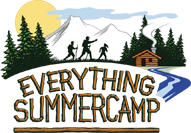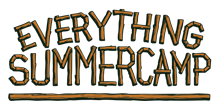Hey, Camp Folks!
We all get great enjoyment out of a hard day’s work here at Everything Summer Camp but, just like all you, we want to have our fun in the sun as well. I’ve been asking people all around the workplace to see what kind of summer camp activities people would be most interested in returning to or trying out for the first time! Making the rounds in our Graphics Department recently to talk to Deb who’s been our sewing expert for the last decade!

Check out her camp activity picks:
Pottery
It was just last May that Deb got the chance to take a one-time class in Pottery. She enjoyed her time learning to make a plate and a couple bowls. She is now eager to try her hand again. “I will definitely be going back to try more,” she told me. “I’d like to try a 6 week course.”
Archery
Next, Deb said she would set her sights on Archery. She went to a Women’s Retreat in Rhinelander a few years back where she got to try her hand with a bow and arrow. She didn’t do too bad either. In fact, she hit a bullseye! At this Retreat, she also got to take boatrides, go horseback riding, and enjoy horse-drawn wagon rides—all of which she would love to do again.
Climbing Wall
Deb’s Women’s Retreat also gave her the opportunity to climb a tall Climbing Wall, but she opted out. Another opportunity found her at Action City in Eau Claire when she took her son and his friend when they were 6 years old. She chickened out yet again, but would return with her son another seven years on and she was brave enough to do it. She said once she was climbing the wall, it wasn’t even that frightening. She’d do it again!
What have you had the opportunity to do at summer camp? Do you share any of Deb’s interests? Let us know in the comments and, as always, thanks for reading, Camp Folks. Happy camping!
- John







